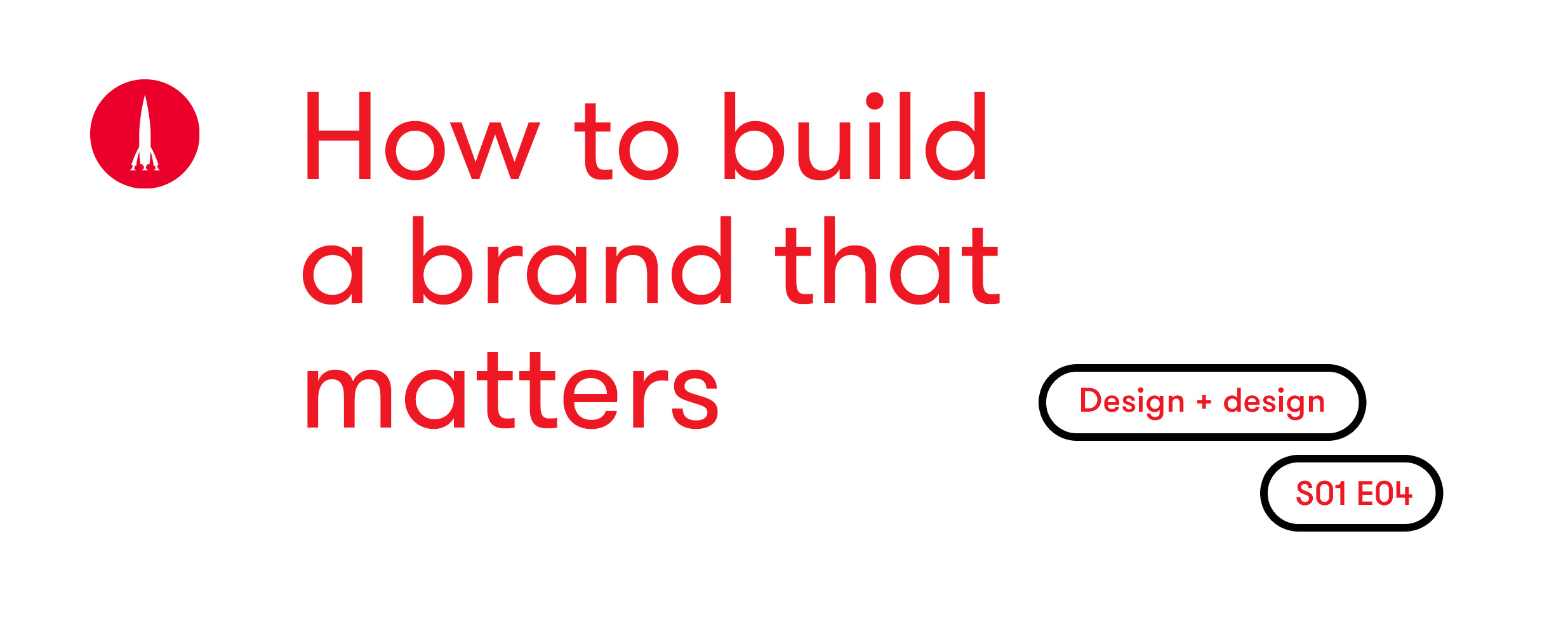The following is a conversation between Barkley's Executive Design Director, Paul Corrigan + SVP, Managing Design Director, Travis Kramer. The topic: Brand your way.
Travis Kramer: Hi, my name is Travis Kramer, SVP, Managing Design Director.
Paul Corrigan: And I'm Paul Corrigan, Executive Design Director. And we're gonna be talking about our design philosophy here at Barkley.
Paul Corrigan: Yeah. Design, it's a big word, right? Design is everywhere. And if you ask 10 people to define design, you'll probably get 10 different definitions. And they're all right for their own routine.
Travis Kramer: It's like art.
Paul Corrigan: Exactly. At Barkley, we believe there are only two types of design in the world. Capital D design and lowercase D design. And the difference between them is simple.
Travis Kramer: So capital D design is dealing with the problems of business. So what are we doing on behalf of brands at the high level?
Paul Corrigan: It's solving problems, right? Solving problems for brands, solving problems for people. Lowercase d design is all about using the toolkit that designers like you and I love to use all day. It's things like color, typography, photography, iconography, um, ways to build a brand experience with an aesthetic and a visual experience.
Travis Kramer: And in the Capital D design space, that also concerns itself with full systems. So what are we making on behalf of (the) brand overall?
Paul Corrigan: Everything is holistic. There's no such thing as a one-off. And lowercase d design is okay with one-offs. In fact, it's all about impeccable execution. So a practical example of the combination of capital D design, working with lowercase d design. Now I've got a prop.
Travis Kramer: You got a prop?
Paul Corrigan: It's the tissue box. But this is a great example of both, right? You look at the outside of this tissue box, and it's decorated, right? With visual language, there are colors, there's, uh, a pattern, right? That's made of illustration and art. There's typography, there's even a logo at the bottom. So everything on the outside of this box is lowercase d designed, right? It's aesthetic. But the moment you go inside this box, capital D takes over. If I need a tissue, this solves my problem, right? Of course, the tissue is right there to take, but the next tissue magically comes up for the next time I need one. How does that work? It's solving a problem for me, but it's also working as a system, right? It's whoever the designer was on the inside of this box was thinking, not of individual tissues, but of tissues working together. Full system, some capital D design, working together with lower case D design.
Travis Kramer: Perfect. So that's a great practical example. You know, I also think about brand-level example of some of the work we've done over the years. Someone like, say Big Brothers Big Sisters.
Paul Corrigan: That's a great example. Big Brothers Big Sisters actually had a problem. They had an identity that hadn't been updated in decades and it was really outta sync with their modern brand experience. And if you're familiar with the Big Brothers Big Sisters experience, it's really all about that connection between an adult mentor and a young person in the community, and helping that young person grow into the best version of themselves they can be. It's that potential. It's protecting that potential. Because we don't have to manufacture it for these kids. They have it. We just need to defend it. So we wanted to literally embed that idea into the logo, right? Starting with this lowercase B, which symbolizes that young person, that little in the equation. And then we add this green arc, which symbolizes the potential that we want to defend, allowing that little to grow into the big, we all know they can be.
Paul Corrigan: Thank you, Travis.
Travis Kramer. Thank you, Paul. It was a pleasure.
Paul Corrigan: As always.
Paul Corrigan: Do I need to pull this from behind this plant? Really?
Travis Kramer: Well, how does it just get there? I mean, how does it get out here if you don't pull it? Okay.
Travis Kramer: Well, I, are you gonna summon it?
Paul Corrigan: All right.
Explore more about How to build a brand that matters here.




